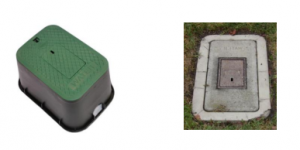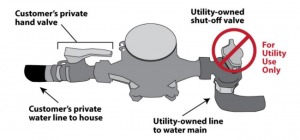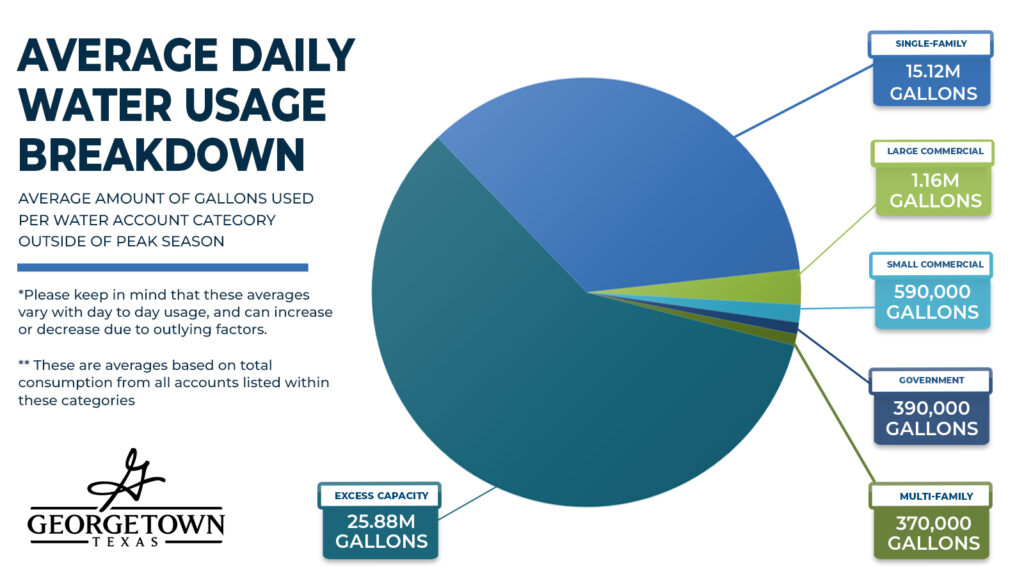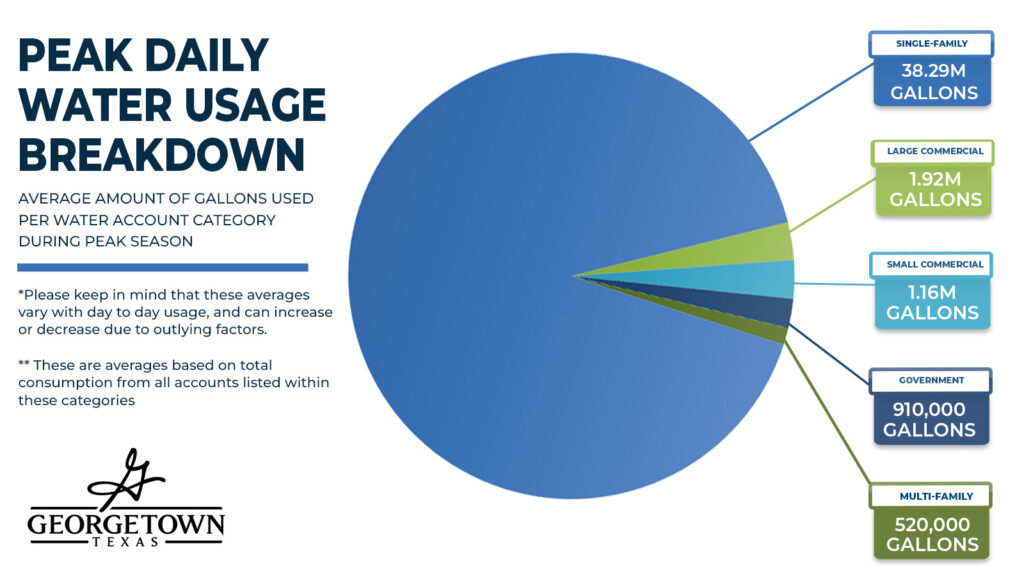Water FAQs
Georgetown is planning for our long-term water needs. You may have seen recent headlines regarding our water supply, but Georgetown’s water utility is NOT in danger of running out of water by 2030.
The utility’s current water sources are expected to continue to supply the city in the coming decades, but the population in our utility’s service area is projected to grow significantly.
We’re planning for this growth. In August 2023, the City of Georgetown entered into a two-year water reservation agreement with EPCOR securing the utility’s right to buy up to 62.5 million gallons a day of high-quality groundwater from the Carrizo-Wilcox Aquifer — enough water to meet Georgetown’s needs through 2050.
Learn more about the City’s water resource planning.
Texas is a property-rights state and significantly limits the ability of cities to restrict growth. While Georgetown can regulate new development through our review and permitting processes, we cannot stop developments that meet regulations.
Fewer than 60% of our water customers live within Georgetown city limits and we are further limited in our ability to control development in areas outside of the City, which are some of the fastest-growing areas of our service territory. By state law, we are required to provide water to all customers in our 400-mile service area.
We’re doing all we can to hold costs down, but the bottom line is that the era of cheap abundant water is over in all of Texas—not just for Georgetown. Georgetown’s water rates remain among the lowest in the region even after recent rate increases. We understand the concerns about rising costs and have resources for financial assistance. Find more info here: gus.georgetown.org/customer-assistance-programs
The City’s raw and treated water capacities can more than accommodate the population we have now, for all but two to three months of the year, when we put 30 million gallons a day of drinkable water on our lawns.
Cities are limited in what they can do to restrict growth, predominately because it’s a property rights issue. When developers/landowners submit a plan for their property, it goes through our development and permitting process. If they can meet our development rules, they are entitled to develop their property.
We are in the process of updating our development rules to match the vision we adopted in the 2030 Plan. We will begin the update this fall, and everyone is encouraged to participate. We will share ways to participate later this year.
Where possible, the City has implemented strategies to help growth pay for growth. This is predominately done through our water, wastewater, and transportation impact fees. To quote state law, Chapter 395 of the Texas Local Government Code defines an impact fee as a “charge or assessment imposed … against new development in order to generate revenue for funding or recouping the costs of capital improvements or facility expansions necessitated by and attributable to the new development.”
The City of Georgetown has had water and wastewater impact fees in place since 1996. In the most recently completed fiscal year, the City collected a total of about $40 million in developer/builder paid impact fees.
Additionally, last year, the City adopted Transportation Impact Fees to help with the growing cost of transportation facilities. Those go into effect in March 2023 and will further ensure growth pays for itself.
All three impact fees (water, wastewater, and transportation) are required to be reevaluated and recalculated at least once every five years to ensure fairness and accuracy. We will reevaluate and recalculate our impact fees within the next year.
The North Lake Water Treatment Plant has undergone an 8.8 million gallon per day expansion. This expansion came online in Spring 2024.
Additionally, the City broke ground on the South Lake Water Treatment Plant on May 10, 2022. The new plant will double the treatment capacity of the water utility, with planned construction completion in two phases from 2025-2026. The new plant will be located on the south side of Lake Georgetown, near Cedar Breaks Park. With the addition of this new plant, the Georgetown Water utility will double its total daily capacity, from 44 million gallons of daily treated water availability, to 93.9 million gallons.
Learn more about where Georgetown gets its water and our Integrated Water Resources Plan here.
Several factors were involved in the City’s decision to remain in our Stage 2 drought restrictions, which include the one-day per week irrigation schedule.
Lakes Belton, Stillhouse Hollow, and Georgetown remain under a drought warning, according to the Brazos River Authority. These lakes, which provide the majority of the City’s drinking water, are susceptible to drought conditions. Find out more information about lake levels here.
Additionally, to continue to protect water pressure and avoid boil water notices, the City will remain in the one-day per week irrigation schedule until our water infrastructure updates, including the South Lake Water Treatment Plant, have been completed. At that time, we will evaluate the need to continue to restrict outdoor irrigation use to protect the water supply in our lakes. For updates on our water capital improvement projects, visit our page on ClearGov.com.
The one-day per week irrigation schedule ensures we have enough water to meet our primary goals to provide water for domestic use inside the home and for fire flow. Water conservation is essential to protecting this precious resource in Georgetown and across the state of Texas. You can find your watering schedule here.
At the first occurrence of a violation, customers will receive a courtesy notice. (Customers will only receive one courtesy notice in a 12-month period.) They will have 10 days to move into compliance. If there is no proof of change after the courtesy notice, a violation will be issued to the customer. If customers need more than 10 days to make repairs after the first violation has been received, up to an additional 20 days may be granted. Customers can appeal and request an administrative hearing within the first 10 days of a violation, as well. If no contact is made, an administrative fee will then be added to the customer’s account on the 11th day.
Non-residential Penalty Structure
| Non-Single Family Residential Violation | 1st Occurrence | 2nd Occurrence in 12 Month Period | 3rd Occurrence in 12 Month Period | 4th Occurrence in 12 Month Period | 5th Occurrence in 12 Month Period |
|---|---|---|---|---|---|
| Non-DCP | Courtesy Notice | $250 | $400 | $500 | $750 |
| DCP1 | Courtesy Notice | $250 | $400 | $500 | $750 |
| DCP2 | Courtesy Notice | $500 | $600 | $800 | $800 |
| DCP3 | Courtesy Notice | $750 | $750 | $750 | $750 |
| DCP4 | Courtesy Notice | $800 | $800 | $800 | $800 |
| Administrative Hearing Cost | N/A | $25 or 10% of fee | $25 or 10% of fee | $25 or 10% of fee | $25 or 10% of fee |
Residential Penalty Structure
| Single Family Residential Violations | 1st Occurrence | 2nd Occurrence in 12 Month Period | 3rd Occurrence in 12 Month Period | 4th Occurrence in 12 Month Period | 5th Occurrence in 12 Month Period |
|---|---|---|---|---|---|
| Non-DCP | Courtesy Notice | $50 | $75 | $100 | $250 |
| DCP1 | Courtesy Notice | $50 | $75 | $250 | $400 |
| DCP2 | Courtesy Notice | $75 | $150 | $300 | $450 |
| DCP3 | Courtesy Notice | $150 | $300 | $450 | $600 |
| DCP4 | Courtesy Notice | $200 | $350 | $500 | $650 |
| Administrative Hearing Cost | N/A | $25 or 10% of fee | $25 or 10% of fee | $25 or 10% of fee | $25 or 10% of fee |
For more information regarding fines, or questions about water conservation email conservationservices@georgetown.org.
Visit our Water Conservation page for information, tips, and recommendations on how to conserve water in Central Texas.
You can find information on how to save water in your lawn by growing native Texas plants instead of turf grass in our Love Your Local Lawn Resource.
In addition to the City’s ordinances, HOAs can adopt additional rules in their restrictions and by-laws – especially when it comes to how the neighborhood looks. Many HOAs and Neighborhood Associations have rules concerning “non-green” lawns and seek to give offending home-owners citations for not maintaining a green lawn – even during times of drought. When local watering restrictions are in place due to drought or capacity issues, we recommend that the organizations do NOT cite folks for not maintaining a lush, green lawn. Unfortunately, the City cannot require that these organizations cease enforcement of their rules, and questions about their enforceability when they conflict with City ordinances should be directed to the HOA or Neighborhood Association.
Another option for homeowners is xeriscaping. According to a law passed in 2013, HOAs can still enforce guidelines or require prior approval for xeriscaping, but they can’t “unreasonably restrict” the homeowner’s ability to conserve water with regard to their lawn. HOAs and NAs cannot prohibit choices like water-conserving turf or drought-resistant landscaping, nor can they prevent you from installing water-efficient irrigation options like drip irrigation. Texas homeowners also have the right to install a rainwater harvesting system, compost vegetation, and to leave grass clippings uncollected on your lawn. The City offers rebates for xeriscaping and other water-conservation efforts.
The City of Georgetown has heard feedback from the community and is working with HOAs and neighborhood associations to halt/pause brown lawn fines for June, July, and August. HOAs and neighborhood associations are encouraged to take the pledge to pause brown fines during the peak demand season for water usage. With pausing fines, we are hoping to encourage our water utility customers to reduce the amount of water they are using for irrigation purposes.
We are also encouraging our residents to take a pledge to help reduce their water usage, and become Super Water Savers this summer by being aware of how much water they are using, and pledging to become either a Platinum or Gold tier water user.
The Georgetown water utility has:
- 56,234 single-family homes
- 49 multifamily complexes, with a total of 8,033 units
- About 6,000 commercial accounts
Commercial accounts are billed at a higher rate than residential customers in accordance with their usage, and our current water rate study recommends adjusting charges to apartment complexes to ensure we are charging customers appropriately for usage.
Additionally, all six golf courses in Georgetown and Southwestern University use reclaimed water, as do some City maintained outdoor facilities, such as soccer fields. Sun City also uses reclaimed water for their communal facilities, in addition to their golf course. Car washes also recycle their water.
We have many, many more single-family residential properties, each with their own lawn, than apartment complexes, and we expect the same conservation and adherence to our water schedule from all our properties.
Receiving a higher than usual water bill can be alarming. For information on how to determine the cause and ways to conserve water in your home visit our Water Conservation Page.
Learn more about utility rates here.
Learn more about the 2022 water rate study here.
You can find our Integrated Water Resources Plan and other helpful resources on our Water Resources page.
You can learn about how the EPA’s new regulations on PFAS chemicals impact the City of Georgetown on our Water Resources page.
On April 10, 2024, the federal government issued the first-ever national, drinking water standard to protect communities from exposure to harmful per-and polyfluoroalkyl substances (PFAS), also known as ‘forever chemicals.’ These regulations will be enforceable in 2029 to allow utilities time to plan and design. You can visit the EPAs page on PFAS regulations to learn more.
Find information about our Capital Improvement Projects on our ClearGov Projects page.
Prior to the acquisition, the City of Georgetown was already providing some water to the Chisolm Trail SUD. The CTSUD had purchased 11,000 acre feet of water from the City of Georgetown to be processed through the Northlake Water Treatment Plant. For example, in 2008, 25 percent of the total treated water coming out of the Northlake plant was for Chisolm Trail customers, who represented far fewer than 25 percent of our total customers. When the City acquired CTSUD, we reclaimed those 11,000 acre feet in the process, thereby increasing our ability to serve our existing utility customers as well.
In addition to recouping some of its treatment capacity, the acquisition also meant the City of Georgetown gained one raw water intake site (which provides 3 million gallons of water per day), four storage tanks, two wells, two pump stations, and the 7,600 water customers Chisolm Trail had at the that time.
The State prevented the City from divesting any of the service area for five years after the acquisition. Those five years expired in 2019, and portions of the Chisolm of Trail service area have already been transferred, both to the Jarrell-Schwertner Water Supply and to the City of Leander. These transfers removed 1,200 customers Georgetown’s services. The City of Liberty Hill and the City of Killen are currently conducting studies on the feasibility of acquiring a portion of the service area that falls within their extraterritorial jurisdiction.
The residential potable water rate will go up to $2.05/1,000 gallons and reclaimed will go up to $1.40/1000 gallons with the new rates Oct. 1, 2022.
Due to the cost of extending dedicated “purple pipe” distribution lines, it is normally only financially feasible to provide reclaimed water to large commercial customers.
Southwestern University was our first reclaimed water account. It was installed in the late 1970s.
Both Cimarron Hills and Berry Creek reclaimed systems were paid for and installed by the developers. Sun City’s reclaimed system is paid for by fees incorporated into its lot pricing. The Georgetown Country Club’s reclaimed facility is covered by a special rate agreement to cover the cost of the installation.
The City of Georgetown also utilizes reclaimed water on some of its sports fields keep the ground more pliable to help with impact injuries to the community members who use those facilities.
The wastewater plants produce up to 8.6 MGD maximum. This is not enough to make reclaimed available to everyone. Looking to the future, City of Georgetown Water Utility is in the process of conducting a Reclaimed Master Plan which will tie into the Water and Wastewater Master Plans and IWRP. The RMP will determine the highest and best use of reclaimed water and ensure it helps preserve our treated capacity to the greatest extent possible. We anticipate the Reclaimed Master Plan to be completed in fiscal year 2024.
Here is some insight on the breakdown* of an average day vs. a peak day of consumption across the different types of water accounts** the City of Georgetown serves.
- Residential average consumption: 15.61 million gallons daily. Residential peak consumption: 38.29 million gallons daily.
- Small Commercial (any commercial account with a line smaller than 2 inches) average consumption: 590,000 gallons daily. Small Commercial peak consumption: 1.16 million gallons daily.
- Large Commercial (any commercial account with a line between 2 and 8 inches) average consumption 1.16 million gallons daily. Large Commercial peak consumption: 1.92 million gallons daily.
- Government average consumption: 390,000 gallons daily. Government peak consumption: 910,000 gallons daily.
- Multi-Family average consumption: 370,000 gallons daily. Multi-Family peak consumption: 520,000 gallons daily.
Currently there are about 6,000 commercial accounts, 49 Multi-Family accounts with a total of 8,000 units, and 56,000 single family residence accounts, which is why historically irresponsible irrigation by single-family residential customers is the largest cause of water waste within the City of Georgetown.
*Please keep in mind that these averages vary with day to day usage, and can increase or decrease due to outlying factors.
** These are averages based on total consumption from all accounts listed within these categories.
Different builders use different equipment and locations for main water shutoff valve placement. Your main water shutoff valve could be located in several different areas. If you have a home with a crawlspace, it could be located there on an interior wall near the front of the house, where the water comes in from the water meter.
If your home was built on a slab, the valve is likely located in your yard, near the water meter box. The water meter box is normally a cement or plastic box buried in the ground near your front curb. The box will be covered with a plastic or metal cover and may look like one of these:

Note: The examples above are not representative of all meter box covers in the city of Georgetown. Your cover may look slightly different. Your water shutoff valve cover will likely look similar to the meter box cover and be found 2-3 feet away (toward your home) from the water meter box. Once you’ve located your shutoff valve, you should familiarize yourself on how to turn the water off when/if needed.
TIP: Be careful when opening the box. Small critters, reptiles, bugs, or other surprises may be waiting for you. It’s a good idea to periodically check under your shutoff valve cover as well as your meter cover to make sure they are both free of debris.
TIP: Old water valves can be damaged and corroded. Only use your hand to turn your water valves on or off. If you cannot do it by hand, call a professional plumber. The image below shows a compressed view of how the water meter and main shut-off valve work together. As stated before, the main shut-off valve will actually be 2-3 feet away from the meter, not close together as shown in the image.

WARNING: DO NOT tamper with the city shut-off valve or the meter itself. It is illegal to tamper with, obstruct access to, or remove a water meter. Be very careful, and if you have any doubts at all, call Customer Care at 512-930-3640.
If you are still unable to locate your main water shutoff valve, your local irrigation specialist or plumber should be able to tell you where it is and show you how it works. Additionally, if you still have your property inspection report, you should be able to find the area of the document that shows you where your main water shutoff valve is located.
What if I have a small leak under the kitchen sink? Do I need to shut the water off at the main valve? No, as long as the leak is between the isolation valve and the sink. Most, if not all sinks, toilets, washing machines and water heaters have their own shut-off valves. These are called isolation valves. If there is no isolation valve, or the leak is behind the isolation valve, you will need to turn off the main valve.
For sinks, the valves are located against the wall directly under the sink (usually inside a cabinet). Washing machines have valves directly behind the machine in the same location as the drainage hose. Washing machines and sinks have two valves, one for cold water and one for hot water. Toilet valves are typically located behind and below the toilet on the pipe/hose that comes out of the wall. Water heaters have a shut-off valve on the pipe that sends water into the tank. Ice makers and dishwashers may also
have isolation valves. Don’t wait until you’re faced with a damaging and costly leak. Find your shut-off valves today. If you need further assistance, contact your local irrigation specialist, plumber or builder.
In the event you have a major leak that causes an excessively high water bill, contact Customer Care at (512) 930-3640 for payment options.
The City assumes responsibility for repairs to water and sewer service lines between the homeowner’s property line to the point of connection into the city systems. The service lines that lie on the homeowner’s property are the responsibility of the homeowner.
For example, state law significantly limits the power of cities to impose moratoriums on growth, especially on developments that have already been approved. A development moratorium is a short-term measure for emergencies, such as an inability to treat wastewater or stormwater drainage deficiencies causing flooding—as was the case in Dripping Springs and Bastrop—not as a solution to long-term water supply issues.
Even with a short-term moratorium, property owners have the benefit of the regulations that exist at the time they contract with the City for development and therefore any subsequent City action would not be retroactive to stop the development if the development has already been approved. And any developments that would have been approved during a moratorium wouldn’t need access to our water for years—after the moratorium would have ended.
Additionally, 40 percent of the City’s water service area, also known as its CCN, is outside of City limits and the City’s extraterritorial jurisdiction, where we have no ability to enforce a moratorium on development and almost no control over development. Within the City’s CCN, the City has a state-mandated responsibility to provide continuous and adequate water service.
Currently, the requirement to provide service without discretion as to what is being built in the service district strains the City’s water infrastructure and its ability to constrain costs for our customers. Therefore, we are actively working with legislators to address
these issues and seek more sustainable, long-term solutions to managing water resources and growth, particularly in areas outside our city limits but within our water service area.
Despite the challenges imposed by State law and private property rights, the City is planning for the future by working to diversify our water supply and growing our treatment capacity. These improvements will help to ensure we meet the demands of our water customers year-round.










